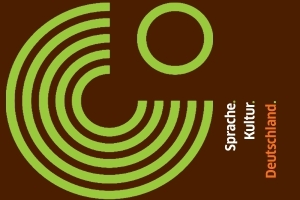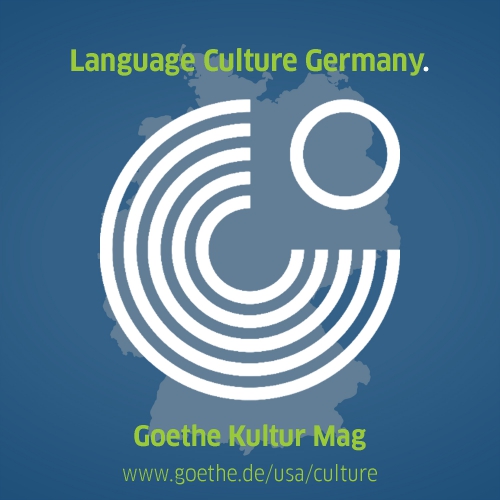Achievements
Building Portfolios and Visual Literacy Skillsets

Student Diana Guevara designed stickers to promote the online magazine of Goethe Institut-Washington.
Visual Literacy is a dynamic film and media arts course at American University (AU) that introduces students to myriad ways of understanding visual images in art, design, photography, film, and digital media. Students create an online website that showcases their work over the semester, including creative and written assignments and a final client project. The course also includes a service learning component wherein students collaborate directly with a non-profit organization. It is usually offered in the spring and fall and has about eight sections on average.
AU School of Communication Professor Kim Llerena is the course coordinator for Visual Literacy and is also one of eight course instructors for this class. This course is required for Film and Media Arts students and is also recommended for Public Relations and Public Communication students. Classes include many first year students and also some sophomores and juniors.
Throughout the semester, students learn the fundamentals of visual communication through units in 2D design, photographic principles such as composition, and film and video principles such as sequencing. At the end of the semester, the final projects call for students to use all of those skills for a cumulative group project.

They are able to pick what they are most passionate about and then by the end of the semester and apply that to real-world client work.
Visual Literacy Fall 2017 student Cassidy Nelson says, "While taking this course I learned how to incorporate aesthetics into not only my photography but also video composition and website compositions. I also learned how to be more critical of my work and apply more complex concepts to my work. While working on my final project I was able to gain experience using professional equipment that the school provided." Nelson and fellow student Monica Gunkle conceived, shot and edited a video to a new Goethe project on DC Parks.
"The final project works with a non-profit organization or community partner in the Washington, D.C. area that has visual needs," explains Llerena. "Every professor does it differently, but for my class I pick one nonprofit partner for the class to work with all semester and then the students put themselves in groups on their individual interest of design, photography or video and then they complete the project for the client." The client in this case was the Goethe-Institut Washington.
Nelson says, "For the final project, my partner and I created a storyboard of how we envisioned the final project to look, who we wanted to interview, and which shots we wanted to get. We then took a couple days to film everything, and then put in about 20+ hours into post production."
Llerena requires each group of students to make three projects for the client: one design, one video and one photo project. "I think that the biggest takeaway for students by the end of the semester is working with the non-profit client partner. They always appreciate how it gives them real-world applications of the theoretical knowledge that they've been accumulating all semester," professor Llerena adds.
Nelson said she really appreciated the broad scope of the class, but that, "I enjoyed the final project the most because we got to apply the principles we learned all semester to something that we were to completely make our own."

